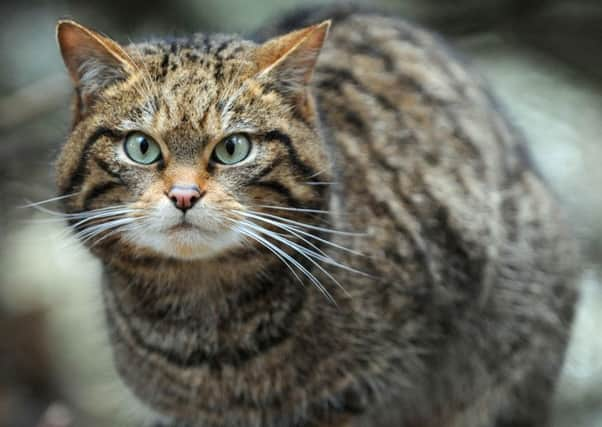Largest ever survey of Scottish wildcats begins


More than 300 trail cameras have now “gone live” in areas identified as hotspots for the elusive animals.
The Scottish wildcat is one of the most endangered mammals in the UK and our only remaining indigenous cat.
Advertisement
Hide AdAdvertisement
Hide AdHabitat loss and persecution through the 19th century has driven the species to the brink of extinction, with the last survivors found north of the central belt.
It is not known how many genuine wildcats are left, but estimates range from 35 to 400. Some experts fear no pure-bred animals exist.
The results of the 60-day survey will help shape a national action plan, which aims to identify and preserve the last few remaining cats.
The key threat to their survival is hybridisation through interbreeding with pet and stray cats.
Scottish Wildcat Action (SWA), a partnership involving experts from more than 20 organisations, has been established in an effort to halt their disappearance.
The group has now set up motion-sensitive cameras to record any cats living in priority areas at Strathpeffer, Strathbogie, Strathavon, North Strathspey and the Angus glens. Work will continue in Morvern later in the year.
More than 130 volunteers will check the cameras, gathering data that will help guide protection measures.
Moves include a neutering scheme to stop domestic and feral cats mating with wildcats and transmitting diseases.
Advertisement
Hide AdAdvertisement
Hide Ad“This is a significant step towards creating safer places for wildcats in Scotland,” said Roo Campbell of SWA.
“The winter survey will provide a huge source of information about what cats are out there, where they are and the degree of hybridisation between our native wildcat and the domestic cat.
“This is the first time a wildcat survey of this scale has been carried out and will be very important for assessing the current threats.”
Scottish environment minister Dr Aileen McLeod said: “This project will carry out important work to protect the future of the wildcat in Scotland. I look forward to seeing the images from these camera trials and finding out more about these fascinating animals.”
Key organisations involved in the rescue plan include Scottish Natural Heritage (SNH), the Royal Zoological Society of Scotland and the University of Edinburgh vet school.
A wildcat’s purity is initially determined through characteristics and markings. Genetic testing is also used.